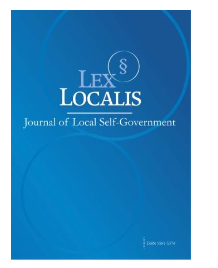REFLECTIVE LEADERSHIP AND SOCIAL INNOVATION IN VILLAGE GOVERNANCE: AN AUTOETHNOGRAPHIC ANALYSIS THROUGH AGIL AND SOCIAL CAPITAL
DOI:
https://doi.org/10.52152/6apbq547Keywords:
reflective leadership, autoethnography, social innovation, AGIL framework, social capital, habitusAbstract
Village leadership in Indonesia is often reduced to a bureaucratic function, narrowly focused on administrative compliance, budget absorption, and program delivery. Such reductionism obscures the relational and reflective dimensions of leadership that emerge in everyday village life, where informal interactions, symbolic practices, and community initiatives play decisive roles. This article seeks to fill that gap by constructing a typology of six reflective leadership roles—dynamizer, facilitator, motivator, innovator, pioneer, and stabilizer—and analyzing how these roles contribute to social transformation at the micro level. Using a reflective autoethnographic approach, the study draws upon the author’s six-year tenure as Village Head of Labanan Makmur (2017–2023), supported by daily journals, village meeting archives, program documentation, local media coverage, and informal dialogues with residents. Data were thematically coded and interpreted through Parsons’ AGIL framework, Putnam’s social capital, Bourdieu’s habitus, and Freire’s dialogical pedagogy. Findings reveal that small yet consistent interventions—such as communal lunches that dissolved hierarchical barriers, multipurpose tents that fostered inclusive spaces, affirmative policies like market fee exemptions that restored livelihoods after crises, grassroots technological initiatives (solar energy, drone training, YouTuber community) that bridged tradition and innovation, pioneering actions through direct involvement in ambulance and waste management services, and informal dialogues that stabilized conflicts during the COVID-19 aid distribution—collectively reshaped frozen bureaucratic relations into participatory and trust-based practices. The study concludes that reflective leadership differs fundamentally from top-down bureaucratic models: rather than imposing programs, it generates bottom-up social innovation by nurturing trust, solidarity, and civic agency through everyday practices. The contribution of this study is threefold: theoretically, it extends AGIL analysis to the village level while integrating social capital and habitus; practically, it offers an operational model for participatory interventions in rural governance; and methodologically, it demonstrates the potential of reflective autoethnography to produce insider knowledge that is both context-sensitive and conceptually transferable.
Downloads
Published
Issue
Section
License
Copyright (c) 2025 Lex localis - Journal of Local Self-Government

This work is licensed under a Creative Commons Attribution-NonCommercial-NoDerivatives 4.0 International License.








